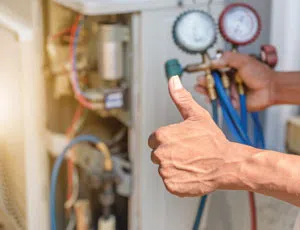Many issues demand the attention of our industry, both here and abroad: increasing government regulation, pressures regarding energy efficiency and minimum energy performance standards, climate change, etc. All of these are likely to be on your mind if not your agenda. But one issue stands out for its potential impact on our industry and its all-encompassing nature — refrigerants.
In the past — and for the most part, currently — our industry has had the luxury of having one dominant refrigerant for most applications, including residential and commercial air conditioning, most aspects of commercial refrigeration, and transport air conditioning and refrigeration. First it was CFCs, then HCFCs, and currently HFCs. But the day of a single refrigerant used across multiple applications is gone, and we as an industry need to be prepared for that reality.
The current dominant class of refrigerants, HFCs, is under increasing fire here and abroad for its high global-warming potential. The previous dominant refrigerants, HCFCs and CFCs, were phased-out because of their impact on the ozone layer. The future is one of multiple refrigerants, each selected according to the needs and characteristics of the equipment in which it is used. Refrigerants have unique operating characteristics, which make them suitable for some applications, while less suitable for others. Some refrigerants, for example, operate at pressures unsuitable for certain equipment, while others are incompatible with lubricants that might be used in equipment. Some are incompatible with certain metals or alloys used in some equipment, while still others might have flammability levels incompatible with equipment installed in close quarters or in close proximity to people or combustible products.
So whereas today one refrigerant might be suitable for residential and commercial central air conditioning and also several commercial refrigeration applications, in the future, each of those will likely require a refrigerant more appropriate to its unique characteristics.
This will impact our industry in varied and significant ways. For distributors, the move to multiple refrigerants will result in more parts to stock (i.e., more inventory) and the need to know about new technologies and which refrigerant will work with which product or system. For contractors, they’ll need more knowledgeable technicians with proficiency in handling several different refrigerants, all of which operate under unique pressures and have discrete handling characteristics.
So, what does our industry need to do to prepare? We will need to come together as an industry to develop a plan for education and training and communications. AHRI will lead a collaborative effort among our industry partners, including ACCA, HARDI, NATE, PHCC, RSES, ASHRAE, and others, to ensure we are prepared. Leveraging our resources and skills, we can ensure that existing technicians are properly educated and trained, that new technicians are taught about the intricacies of various refrigerants in the classroom and in their field work, and that all of them have access to appropriate mobile apps in the field to ensure proper equipment installation and maintenance.
Working together, we can weave a relatively seamless transition to multiple refrigerants, ensuring the continued comfort, safety, and productivity of our customers.
Stephen Yurek is President and CEO of AHRI, the Air-Conditioning, Heating, and Refrigeration Institute,
www.ahrinet.org.


